
Social Infrastructure: Connecting People & Places for Thriving Communities


2022 –2024
Many calls to shape more equitable, resilient, and healthy communities center on the power of social infrastructure — the network of physical and social structures that build relationships and foster thriving communities.
To better understand the keys to quality social infrastructure, a team of U.S. design, planning, and policy practitioners from Gehl, Local Initiatives Support Corporation (LISC), Reimagining the Civic Commons, and Washington Housing Conservancy went on three learning exchanges in Belfast, Brazil (São Paulo and Rio de Janeiro), and Cape Town, with support from the Robert Wood Johnson Foundation. These visits revealed lessons learned for the United States on how to better define, invest in, and sustain social infrastructure in communities.
2 1 Why Social Infrastructure? 04 2 Project Introduction 19 3 Defining Social Infrastructure 29 4 Call to Action 50 + Appendix Considerations + Case Study 66 About This
Project
Contents




Dr.
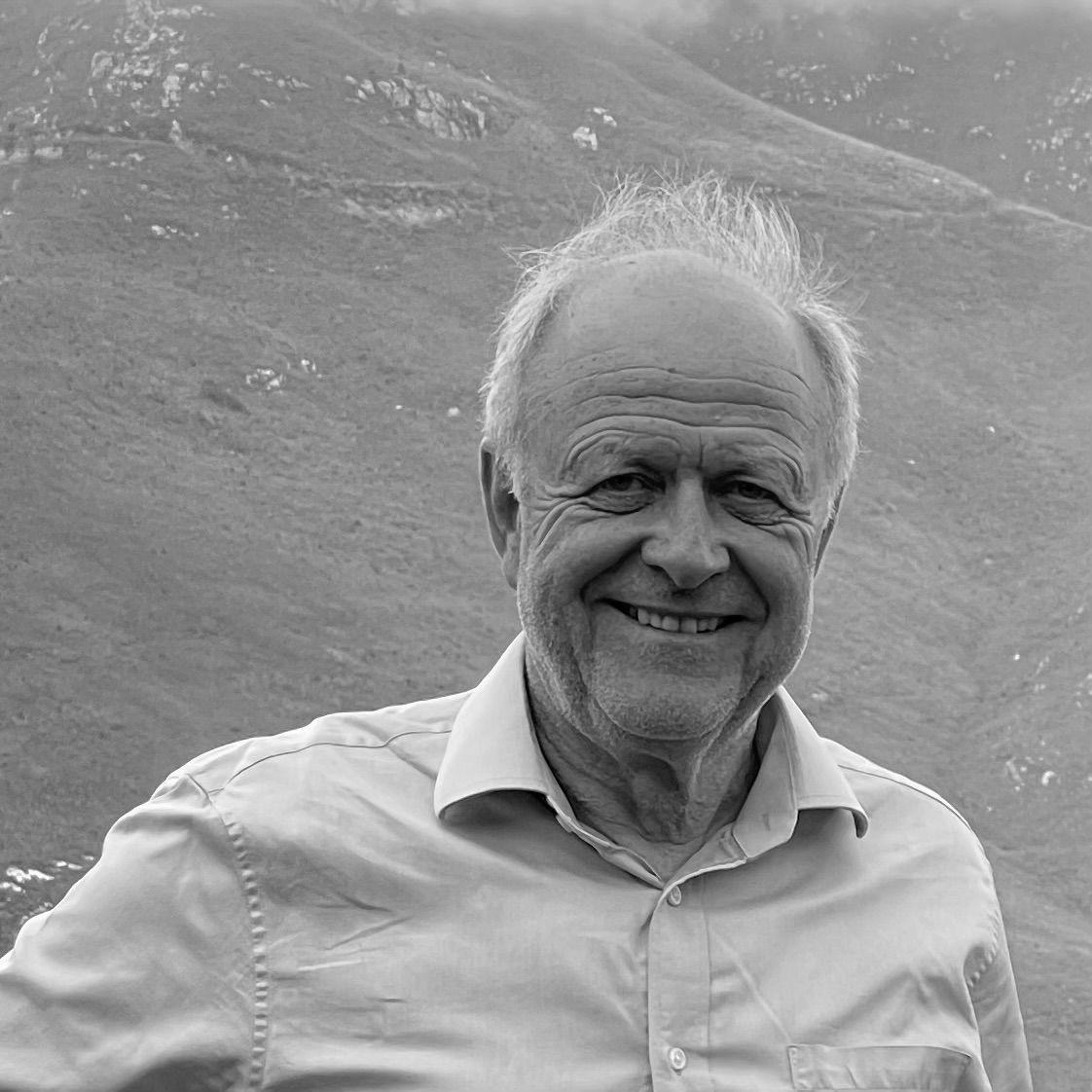
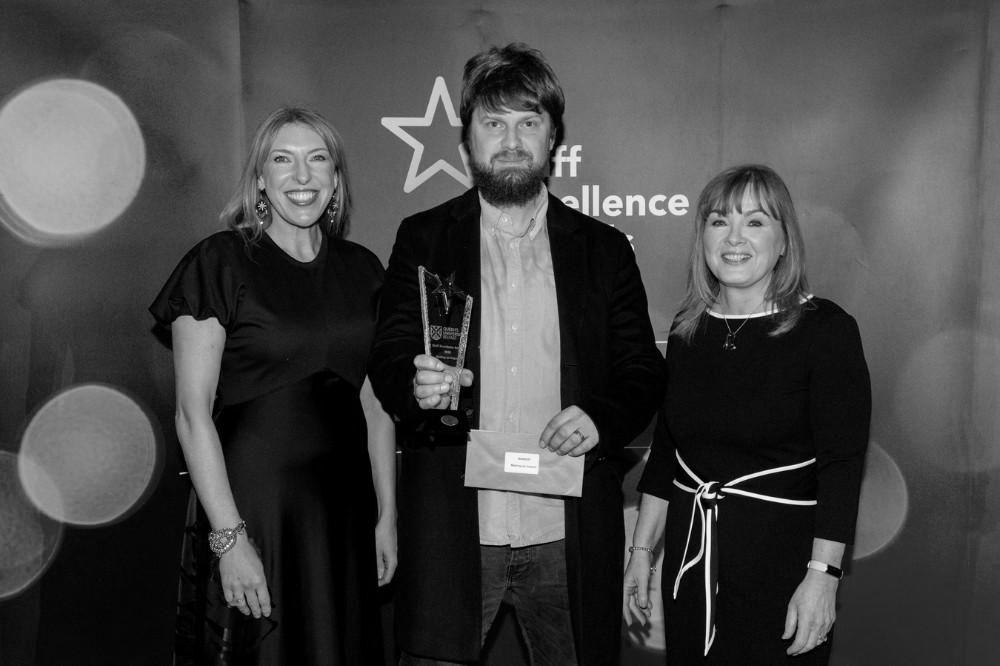





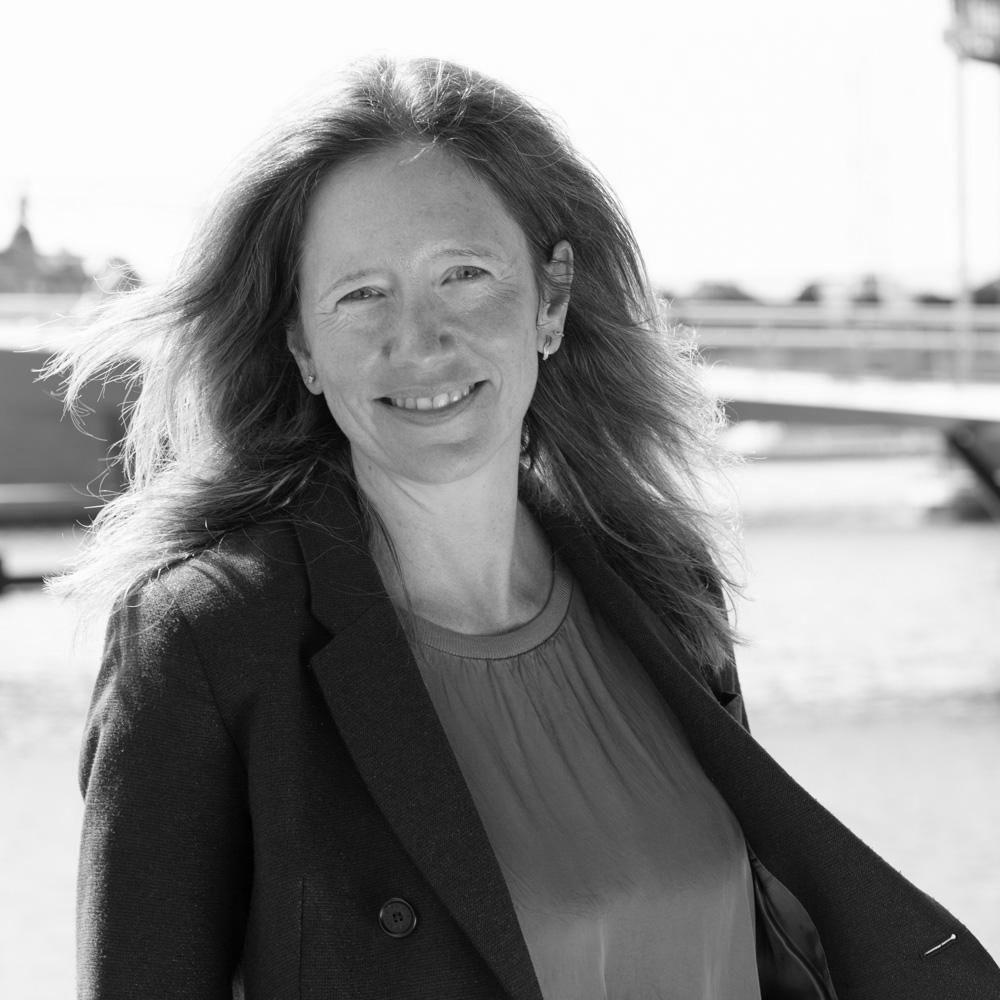


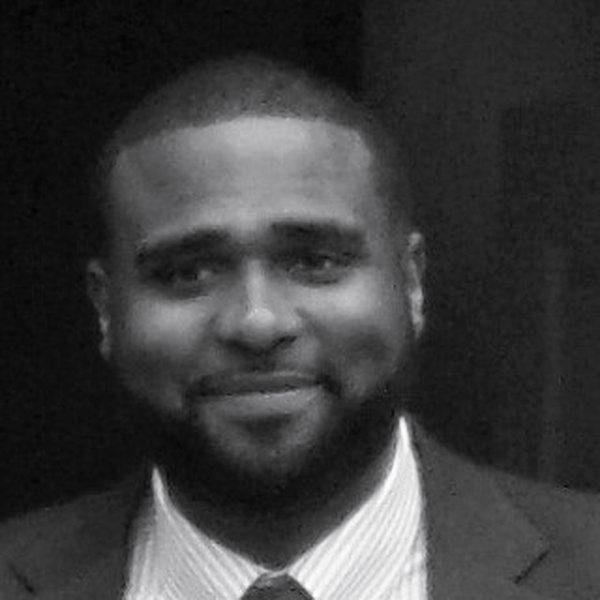
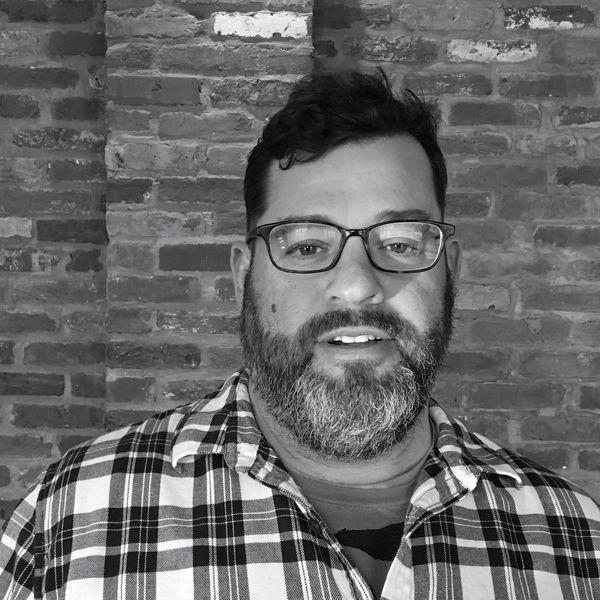

A multidisciplinary team experienced in community-centered planning, design, & development

Gehl assembled a team to gain global perspective and develop a call to action for shaping and sustaining quality social infrastructure in the United States.
Gehl — Making Cities for People 3 Matthew Perkins Program
LISC Safety
Justice Initiative
Executive
Julia Day Team Lead
Partner
Associate Louise
Director Helena Wolf Designer Sarah Lucy Estephan Designer Rafael Marengoni Designer Alysia Osborne Assistant Director, City
Charlotte Planning Department
Director,
&
Kimberly Driggins
Director, Washington Housing Conservancy Bridget Marquis Director, Reimagining the Civic Commons
&
Eamon O’Connor
Kielgast
of
Kathryn Ewing Senior
Urban Design, University
Cape Town
Boraine Independent
Practitioner, Cape Town Washington
Architect
Former City Planning Commissioner
Rio de Janeiro
Michael Senior Program Officer, LISC Safety
Lecturer in
of
Andrew
Partnering
Fajardo
& Urbanist,
of
LeVar
& Justice Initiative Neil Galway Director of Postgraduate Education in Planning, Queen’s University Belfast
Funding
Senior
Officer, Robert Wood Johnson Foundation
Partner Sharon Roerty
Program
Why Social Infrastructure?

1
Gehl — Making Cities for People 4


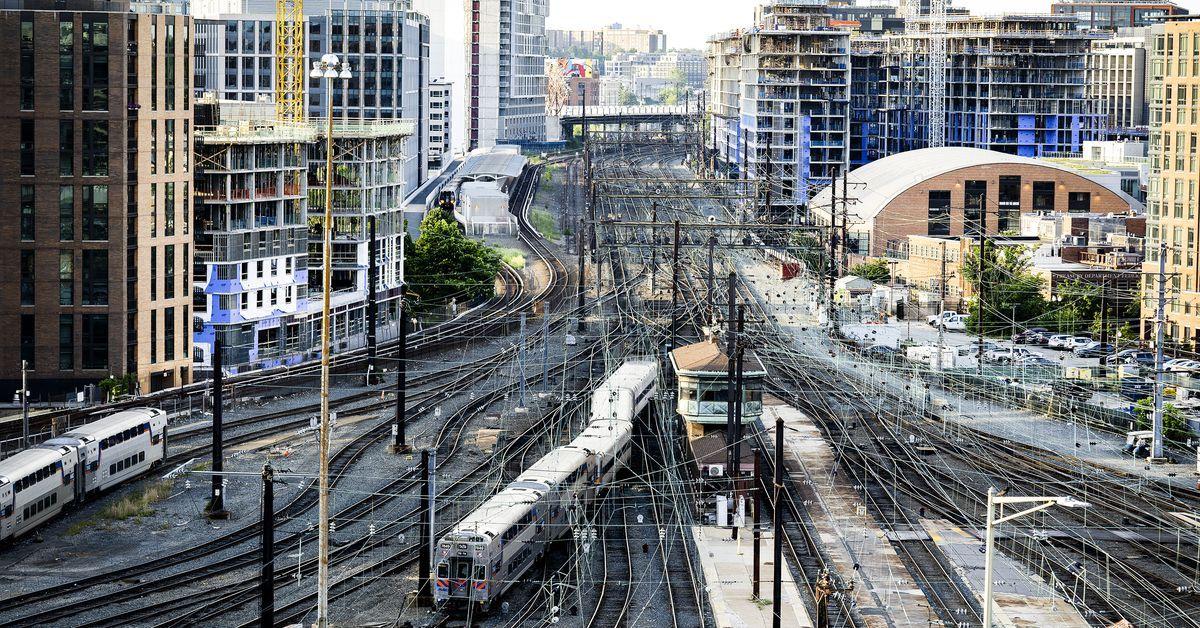
When you hear infrastructure, this is what you think of — essential facilities and networks for moving Energy generation and water supply





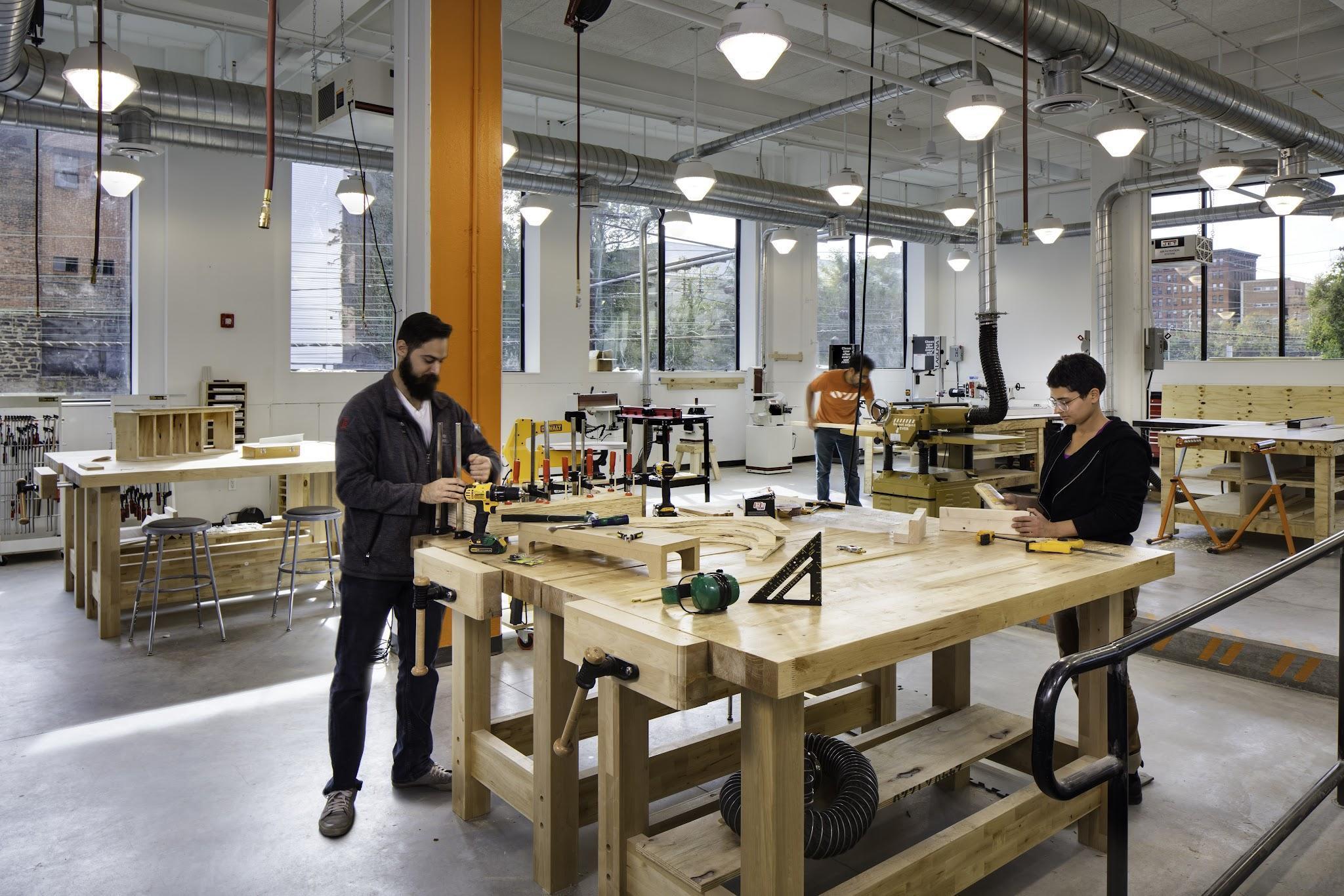
just as essential a network — for connecting people to each other and to opportunity.


Gehl — Making Cities for People
Transportation
Telecommunications
health
Mental health & calm
based care
connections
Inter-state connections Power supply Physical
& well-being Access to resources and education Climate justice & resilience
Community-
Yet, in the United States, social infrastructure isn’t treated like it’s essential.
Even
though we need it more than ever.
Gehl — Making Cities for People
6
Social Infrastructure
Segregation
81% of all US metro regions with over 200,000 residents, were more racially segregated in 2019 than in 1990.1

As people, we are disconnected from one another and institutions.
Polarization
90% of Americans think the country is divided and 60% are pessimistic about the possibility of overcoming these divisions to solve big, collective problems.3

58% of Americans are lonely – people with lower incomes and people from underrepresented racial groups more likely to be lonely.2
The share of Americans who agree that “most people can be trusted” has fallen by 23% since 1964.4
Trust
Gehl — Making Cities for People 7
Loneliness
Social Infrastructure

Our places are disconnected and disinvested, too.
75% of library directors surveyed across the US operated with reduced budgets in 2020.6
Divestment
Communities of color are three times more likely than white communities to live in nature deprived places.7
Injustice
Inequality
Neighborhood economic connectedness has a greater impact on social mobility than other factors like inequality, segregation, or income.5
The widespread legacy of redlining continues to shape higher neighborhood poverty levels, lower labor market engagement, and greater environmental hazards.8
Racism
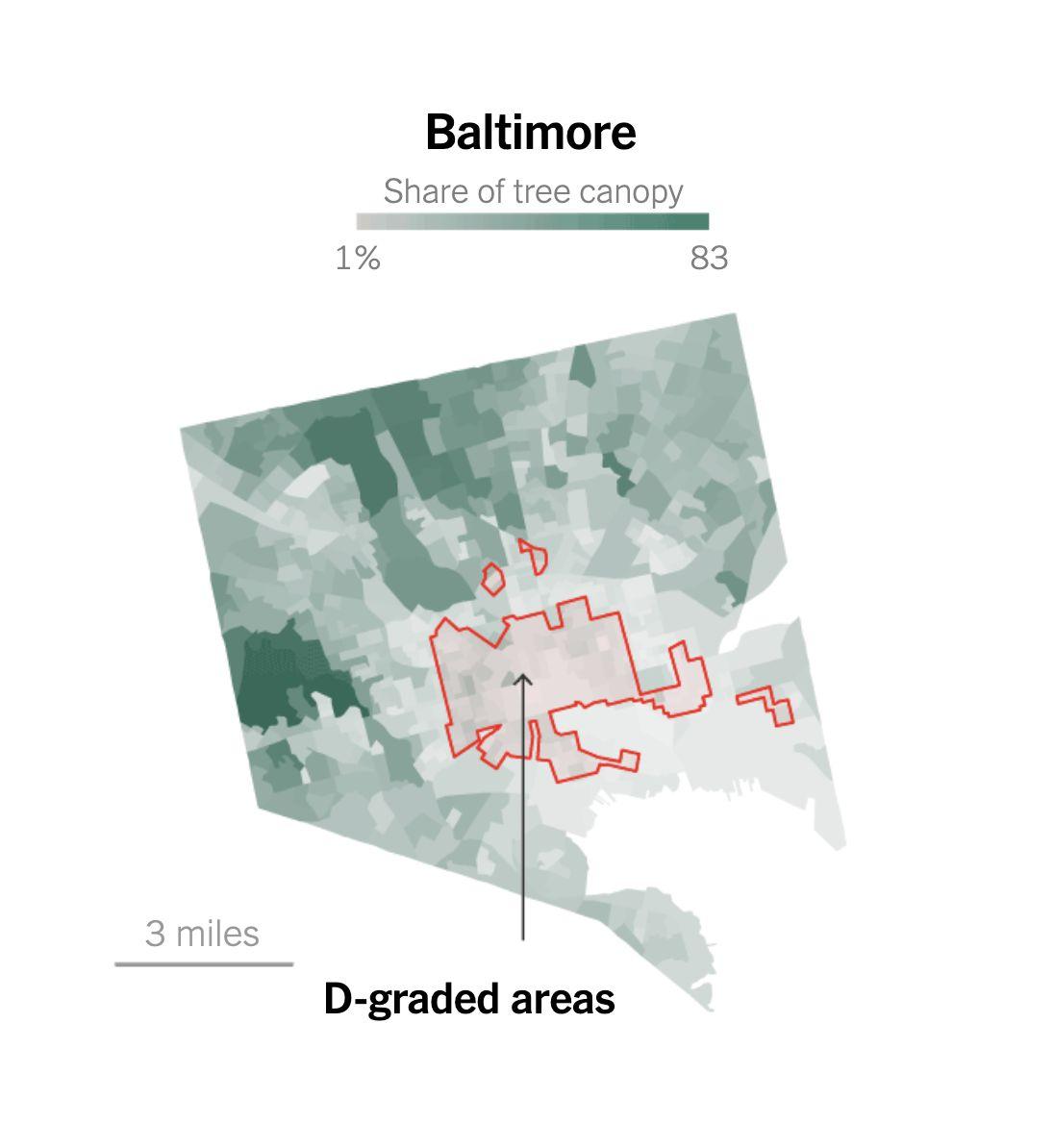
Gehl — Making Cities for People 8






A 2023 U.S. Surgeon General Report reports on the individual health effects of social isolation.9
This all comes at a cost to people and to society.
People without access to popular, well-maintained parks reported lower levels of social connection and trust in local government.10


Gehl — Making Cities for People
9
Social infrastructure can address this crisis by connecting
people.
Gehl — Making Cities for People
10
Social
infrastructure creates opportunities for people to build critical relationships within and across difference in their communities.11
Public life is a shared experience of place created by people when they live their lives outside of their homes, workplaces, and cars.

Bonding within a defined group is important for reinforcing a shared identity, which may be particularly important for members of marginalized communities to feel safe, understood, and empowered.


Bridging across different groups is important for decreasing polarization and building trust and tolerance in communities.12
Strong bonding and weak bridging, especially within a defined group that is dominant, may reinforce attitudes of superiority and prejudice – bonding and bridging together is critical for advancing social equity.13
Gehl — Making Cities for People
11
And, when done right, social infrastructure generates outcomes beyond relationships alone to address other crises.



Sense of Place
Relational outcomes Communal outcomes
Gehl — Making Cities for People
12
Creative Expression Health
Economic Opportunity
& Well-Being Climate Resilience Education & Empowerment
Social infrastructure for climate action
Eric Klinenberg’s study of the 1995 Chicago heat wave found that the presence of social infrastructure — vibrant community spaces and networks that connected people — was tied to lower mortality rates in areas like Auburn-Gresham.14


A community farm in Cape Town’s Gugulethu township provides residents with access to local produce and is co-located with a facility that diverts household food waste from landfills (900 households currently participate).15
CicLAvia, a recurring Los Angeles program that opens up streets to people, bicycles, and micro-mobility, improves air quality by reducing ultrafine particles in the air by over 20%, compared to days when cars drive on participating streets.16
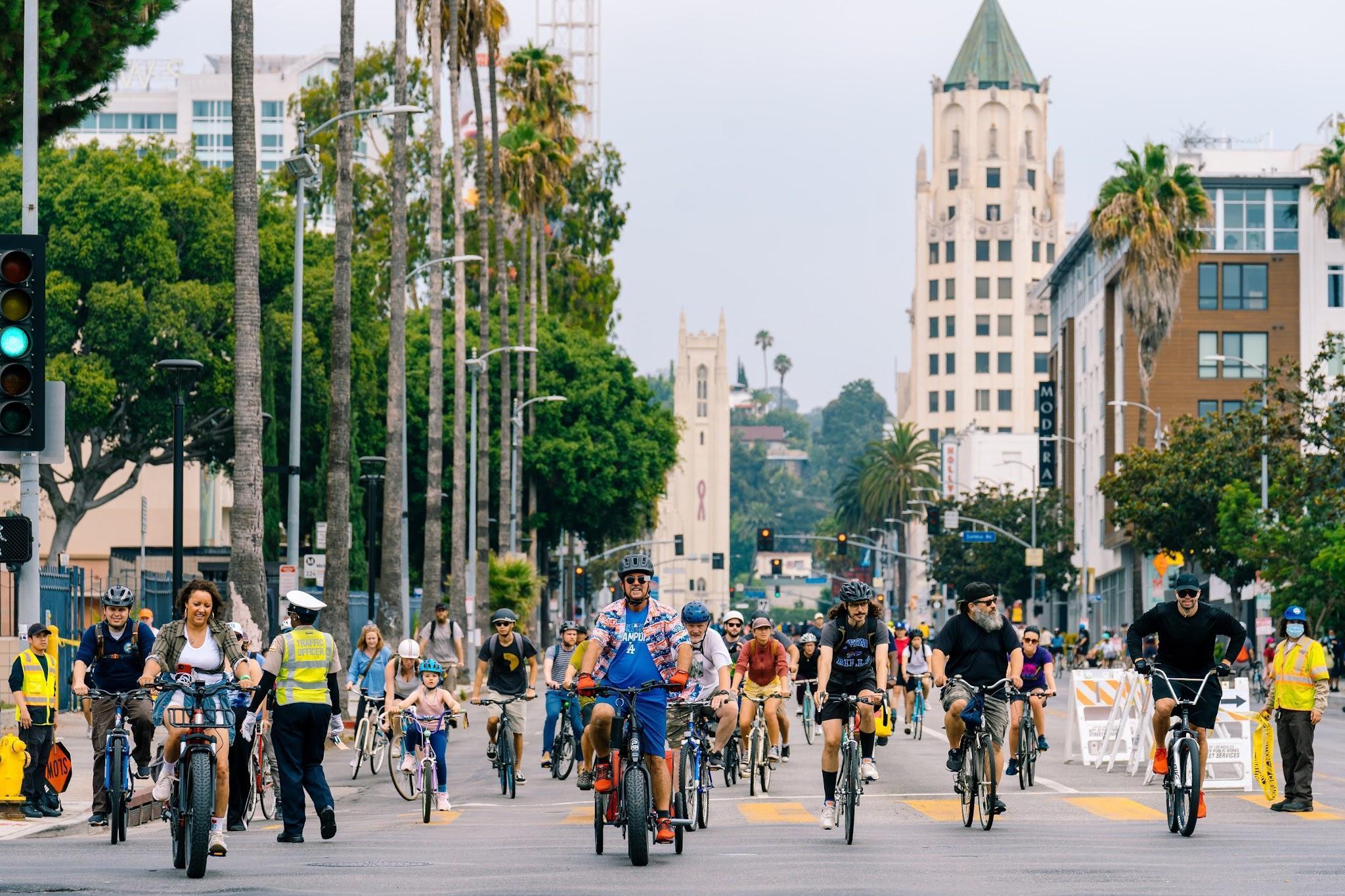
Gehl — Making Cities for People
13 CHARLES BENNETT / ASSOCIATED PRESS
CICLAVIA LOS ANGELES
Social infrastructure for economic mobility
Brazil’s SESC facilities provide access to resources as well as spaces for skills development – creating a supportive environment for individuals to improve their financial status and well-being.

Raj Chetty’s research on economic opportunity in the US indicates that children who grow up in communities with more cross-group interactions — often facilitated by social infrastructure — are more likely to rise out of poverty.5


Streetscapes is a non-profit and green oasis in Cape Town CBD that offers chronically unhoused people peer mentoring and access to employment opportunities to rehabilitate their lives – 79% of their workforce moves off the streets in 6 months.17
Gehl — Making Cities for People 14
BOYS & GIRLS CLUB OF MANCHESTER
STREETSCAPES
Social infrastructure for health and well-being

At SESC locations throughout Brazil, residents can conveniently access dental care and participate in health education courses and programs focused on building healthy habits to improve quality of life.18

pathways for walking and cycling has been linked to a 1.5x increase in perceptions of community belonging.19
Therapeutic community gardening in Essex, UK significantly improved and sustained self-reported well-being for people with mental illnesses, even as well-being was deteriorating nationally.20

Gehl — Making Cities for People 15
TRUST LINKS
Social infrastructure for racial justice
From 1966-1982, some 60,000 residents of color were forcibly displaced from District 6. Today, Streetscapes’ program in the area combats harm done by this and other racist exclusions – from housing, opportunity, and care.21

The revitalization of Tom Lee Park in Memphis, TN set out to dignify and find justice in Black rest by creating a vibrant and accessible riverfront oasis in a city that barred Black people from outdoor recreation areas.


The Peacemaking Center in Syracuse, NY transformed a vacant building into a space offering programs focused on healing and restoration as a solution to violence and conflict in the community.23
Gehl — Making Cities for People 16
STREETSCAPES
CENTER FOR JUSTICE INNOVATION
Social infrastructure for creative expression

Redes de Maré’s cultural center offers a free dance school creating an inclusive invitation for individuals to share, celebrate, and express their unique cultural identities.

iThemba Walkway features vibrant murals and an homage to the resilience of Guhuthelthu in the face of apartheid and ongoing racial and spatial injustices. The public art displays engage and inspire local primary school children.
According to a recent study of lower-income neighborhoods across New York City, cultural resources are strongly associated with better health, schooling, and security – including a 18% decrease in the serious crime rate.24

Gehl — Making Cities for People 17
AFRIBEMBÉ FESTIVAL
DAVID MAMBOUCH
Social infrastructure for civic engagement

Community-led transformation of Methow Park in Wenatchee, WA fostered community power, including the formation of a stewardship group whose voter drive in the park increased Latino voter turnout by 300%.25
TRUST FOR PUBLIC LAND

A WhatsApp group to organize support for creating the iThemba Walkway is still active today engaging neighbors in collective stewardship and championing expansion of the project to other neglected walkways in the area.
Between 2015 to 2018 (before and after Girdwood Community Hub opened), the number of people in a community survey reporting that they engage across the social divide, or across the historic sectarian peace line, increased twofold.
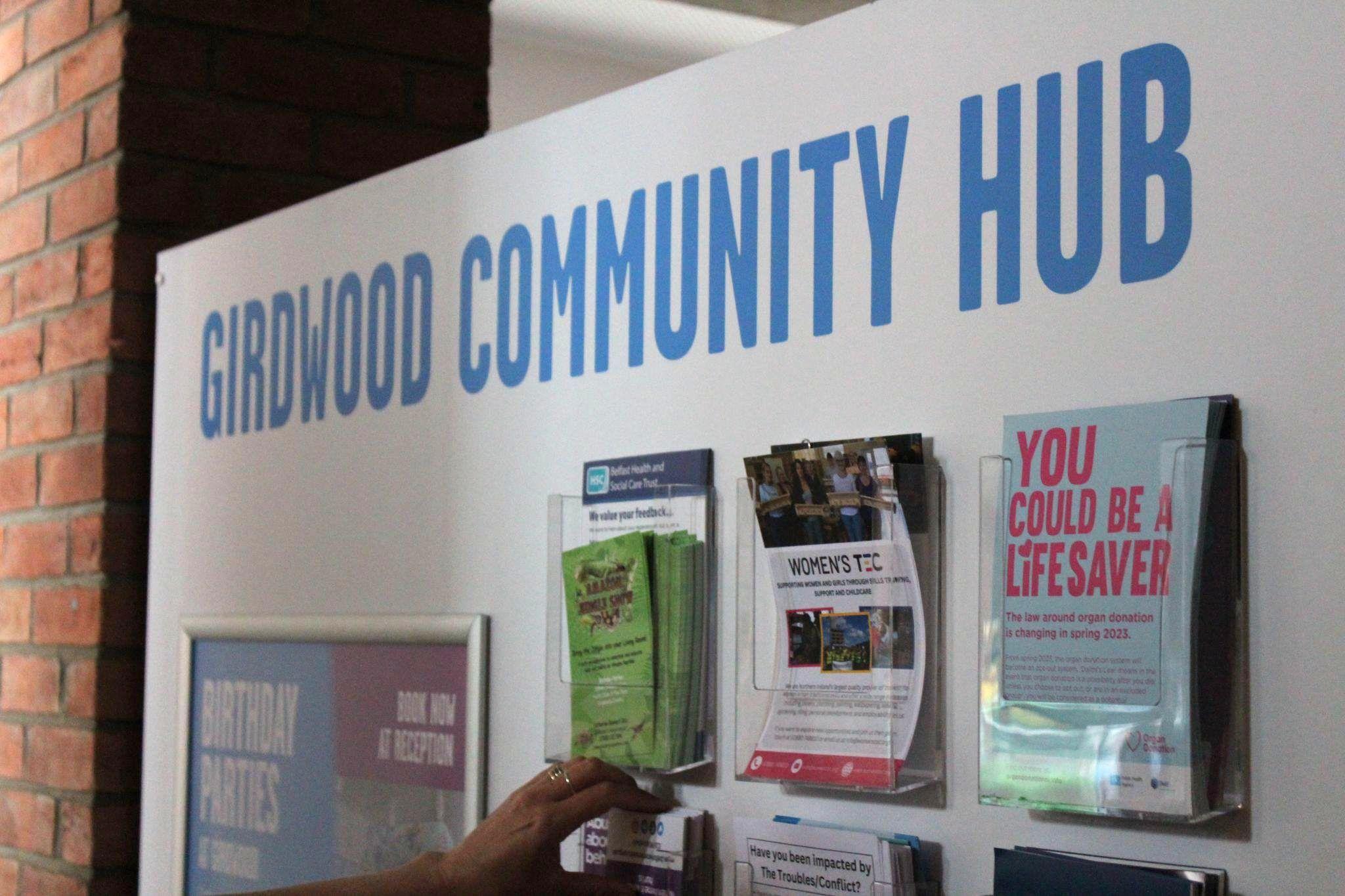
Gehl — Making Cities for People 18
Project Introduction

2
Gehl — Making Cities for People 19
Social infrastructure in the US is saddled with challenges...
Longstanding, inequitable gaps in access
Limited shared understanding or definitions
Unclear funding and operating models
Due to histories of racism and disinvestment, who you are or where you live often dictate your level of access to social infrastructure.

Social (“ThirdInfrastructure Places”)isNot DistributedEqually AcrosstheU.S.
Unlike hard infrastructure, social infrastructure lacks agreed-upon definitions within fields that shape it.

Worrylessabout CrumblingRoads, MoreAboutCrumbling Libraries
The paths to supporting existing and shaping new infrastructure are not as clear-cut as for hard infrastructure.

LocalParksCanʼtKeep UpWithDemand.This NewToolkitCouldHelp
Insufficient support and belief
Practitioners and decision-makers may be resistant to prioritizing investments in social infrastructure

NewYorkerslovetheir libraries.Sowhyare theyalwaysonthe choppingblock?
Gehl — Making Cities for People
20 SYRACUSE
PENNSTATEU
+
THE
ATLANTIC
NCSTATEUNIVERSITY
GOTHAMIST
…but now is the moment to act!
Interest and attention in research circles
A wave of articles, publications, and reports are emerging to build advocacy and support.
More
policymaker calls to action
More
The U.S. Surgeon General made social infrastructure his first recommendation in his report on loneliness.
private and public funding opportunities
Leaders at the local level are catching on

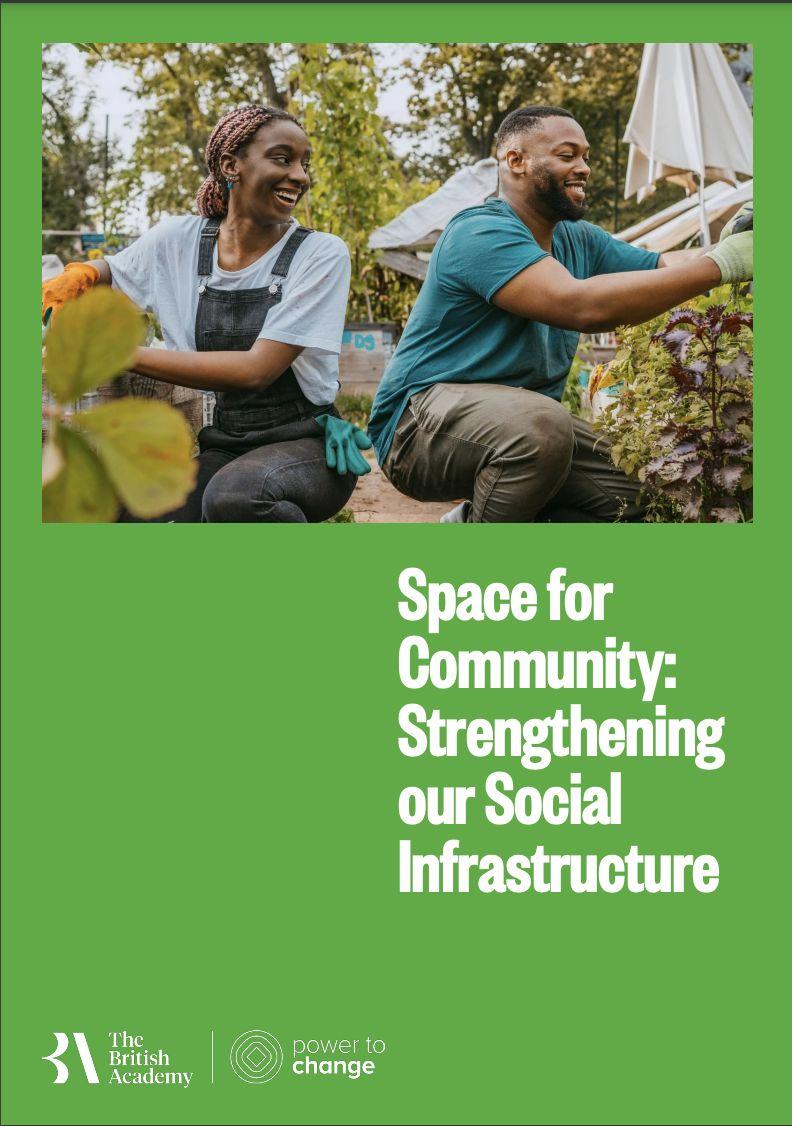

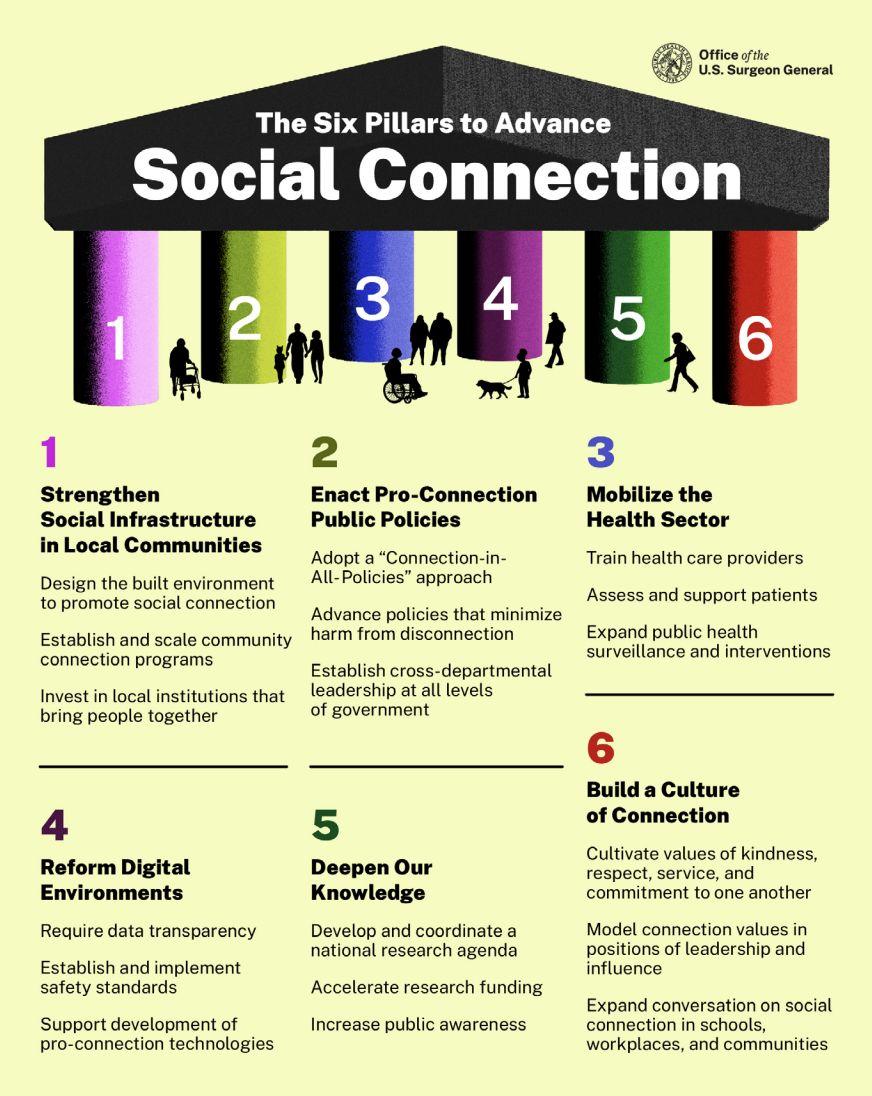
The paths to supporting existing and shaping new infrastructure are not as clear-cut as for hard infrastructure.
High profile grants like the Reconnecting Communities & Neighborhoods Program prompt local leaders to consider and assess local social infrastructure.




Gehl — Making Cities for People 21
Published January 2023 ↙
A group of urban leaders from across fields came together over 18 months to better understand and advocate for high-quality social infrastructure.
Understand key concepts and potential audiences
Gain global inspiration through learning exchanges
Synthesize and apply to the U.S. context Activate findings with diverse U.S. audiences
Gehl — Making Cities for People 22
1
2 3 4
October 2022 March 2024
Together they set out on three learning exchanges to places with U.S. relevance. Selected for learning exchange


KEYSELECTIONCRITERIA
RelatabilitytoU.S.context Belfast

Historyofdiscrimination
Mixofkeyactors
Documentedoutcomes
Positionedforlongterm





Gehl — Making Cities for People 23
← 12.3 million people 0.56 G (severe inequality)
✔
✔
✔
✔
✔
Cape Town
Rio de Janeiro &
← 4.6 million people 0.62 G (severe inequality) ← 0.64 million people 0.28 G (relatively equal)
São Paulo
Considered for learning exchange Gini Coefficient (G) >0.4 is considered high inequality U.S. Gini coefficient is 0.49 G (high inequality)
A Belfast peace barrier…
Foreign places with familiar challenges to the U.S. – like discrimination, disinvestment,
& disconnection.


Belfast

Recalls a divisive U.S. highway bisecting a neighborhood
Failing stormwater management in the urban periphery…


Apartheid-era geographies of Cape Town…



…mirror the living legacy of racist redlining policies across the U.S.

São Paulo …resembles that of flood-prone US communities.
Gehl — Making Cities for People 24
Cape Town
In Belfast, leaders at all levels are working to reverse decades of segregated & securitized infrastructure to connect people of different beliefs to each other and to economic opportunity
Alley is an intimate, resident-created shared space for neighbors to spend time and gather.




Belfast has a comparable…
→ Population to Des Moines, IA
→ Population density to Baltimore, MD
→ Land area to San Francisco, CA
→ Racial composition to Boise, ID*



25
Forth Meadow Community Greenway stitches together once-divided communities through open spaces along a 12 km route.
25
Shankill Mission a vacant historic site turned into a community-serving arts hub.
Wildflower
Shankill Women’s Center will transform a derelict interface area to create a welcoming, safe and accessible shared space for women on both sides of the former peace barrier.
6
Girdwood Community Hub transformed a contested site into one with social housing, recreational facilities, public resources, and learning services.
key projects
In Brazil, communities that have been pushed to the periphery of cities and society are shaping spaces that center their cultural heritage and secure rights to resources.


Sao Paulo has a comparable…
→ Population to New York City, NY
→ Population density to San Francisco, CA
→ Land area to Houston, TX
→ Racial composition to Nashville, TN*

Rio de Janeiro has a comparable…
→ Population to San Francisco Bay Area
→ Population density to Boston, MA
→ Land area to Los Angeles, CA
→ Racial composition to Nashville, TN*


and common ground for city residents.

is a program and site that empowers young people through circus arts.

26
Circo Crescer e Viver
creative space for residents of one of Rio’s largest favelas.
The Museum of New Black Memory fosters dialogue about Brazilian memory and cultural identity in the African diaspora.
Sundays transform Avenida Paulista into a canvas for public life.
corporate contributions,
community centers aimed
enhancing quality
life
educational, cultural,
recreational
Funded by
SESC is a network of
at
of
through
and
services.
Galapão ZL is a resource hub for people living in the peripheries.
CEUs are publicly-funded educational, cultural, & recreational hubs serving local residents.
26
The Port of Rio de Janeiro is a hangout
8 key projects
In Cape Town, disconnected Black and mixed-race neighborhoods are organizing in partnership with NGOs and government authorities to improve local infrastructure.
Lotus Park Neighborhood Center and Waste Facility clusters every-day amenities to deliver important services and create local economic opportunity.

7 key projects
Cape Town has a comparable…
→ Population to Seattle, WA
→ Population density to Austin, TX
→ Land area to Jacksonville, FL
→ Racial composition to Jackson, MS*

resource

Streetscapes Urban Garden is a green oasis and haven for community-centered rehabilitation.


a neglected space


community initiative empowering local residents and promoting sustainable transportation.
iThemba Walkway, a community-driven project, transformed
Langa Bicycle Hub is a
27 27
Monwabisi Park Neighborhood Center is a central hub for gathering and accessing resources in an informal settlement.
Harare Library is a centrally-located
hub and local hangout serving residents of Khayelitsha.
Operating model overview
Multi-national government program
National government program
Initiatives funded by multiple governments or multi-national organizations
Initiatives that rely on national funds for infrastructure or service provision
Municipal government space or program
City-funded programs, projects, and initiatives
Community-
led initiatives
Resident-led projects on public land that rely on individual contributions of time and money, and/or public funds through advocacy
Neighborhood -based community development
Dedicated philanthropic commitments to a specific community / geographic area


Crossneighborhood initiatives
Privately funded public spaces and programs
Programs that receive philanthropic funding for investments in multiple areas
Projects that are financed through corporate taxes or direct private dollars
Diverse array of funding sources
Micro financial inputs
Projects that are financed through a mix of public, private, and philanthropic funding
Projects created through individual contributions of time and money steered by a process of co-design, co-production, and co-management. Individual


Gehl — Making Cities for People
SESC community centers, São Paulo
Tide Setubal Foundation and Jardim Lapena, São Paulo
Centros Educacionais Unificados (CEUs), São Paulo
European Union PEACE Programme, Belfast
Public Philanthropic Private Mixed
Defining Social Infrastructure

3
Gehl — Making Cities for People 29
Many are thinking about this term and what it means.
“Social infrastructure represents the crucial organisations, places and spaces that enable communities to create social connections – to form and sustain relationships that help them to thrive.”
— THE
BRITISH ACADEMY

We took stock of a wide range of definitions in literature, interviews, and global learning journeys.
SOURCES
Extensive literature review
Interviews with nearly 20 leaders across U.S. sectors & geographies
Three global learning journeys



“What people are doing to care for each other and their communities is the foundation of social infrastructure.”








“Social infrastructure is another word for what keeps us going.”
—
JESSE LAITINEN, STREETSCAPES, CAPE TOWN
Gehl — Making Cities for People
Not a one-off place or program, but an intentional, connected, well-resourced system that adapts over time
What this looks like depends on context! It could be parks, community centers, barber shops, markets, and more
Social infrastructure is the network of physical and social structures that build relationships and foster thriving communities.
More than just place — it’s the ecosystem of programs and organizations that bring places to life and people together Important to a range of community outcomes — from health to climate resilience to economic opportunity
Best understood and activated at the neighborhood or cross-neighborhood scale for sustained local impact
Bonding and bridging within and across lines of difference — in service of social cohesion and civic trust
Gehl — Making Cities for People
31
Our Definition
But what does social infrastructure look like in action?
Gehl — Making Cities for People
32 Spatial Building Blocks

Whether we know it or not, we interact with different types of social infrastructure in our everyday lives.
It might be a community garden… …a local park… …or maybe a public library!

Gehl — Making Cities for People 33
Building Blocks
Spatial




Characterized by strong, intra-group ties
Havens are spaces for people to gather around shared identity.
Havens build bonds within groups that need a safe, communal space — such as people from historically marginalized backgrounds who have lacked spaces to gather. However, havens should not be so exclusive that they prevent connections across difference.
“I got to know a lot of people here. I got connected to my ‘neighbors’ in a different setting and my ecosystem changed.”
— RUDI



Gehl — Making Cities for People
35 Spatial Building Blocks
The Institute for New Black Memory in Rio de Janeiro is a place to learn about and celebrate Afro-Brazilian culture.
Wildflower Alley in Belfast brings together neighbors in a shared oasis that celebrates their community.

Characterized by loose, inter-group ties
Hubs are spaces for people to connect across different backgrounds.

Hubs encourage contact across diverse groups that may not otherwise interact –such as people of different races, ages or neighborhoods. In order to bring people together around shared interests, hubs can't be so general, flexible, or multipurpose that they lack specific appeal.
Lotus Park Neighbourhood Center, a VPUU project in Cape Town, clusters services for neighbors of all ages to enjoy in one place.

CEU Parque de Carmo in São Paulo blends dedicated space for early childhood education and play …
Girdwood Community Hub saw a 20% jump in neighbors reporting they engaged with people across the peace line after project opening.

… with multi-generational spaces to gather through recreation and culture.
Girdwood Community Hub in Belfast was designed to bring two divided neighborhoods together through a mix of programs.

Gehl — Making Cities for People
Spatial Building Blocks
Spatial Building Blocks

Characterized by inclusive public life
Hangouts are spaces for people of all backgrounds to to just be.
Hangouts work well when they are oriented near attractions — such as havens and hubs — and when they stitch together different communities or parts of a community.
“People did not understand that it could be used for leisure because São Paulo had not yet had this experience in other places.”
— ENRICA DUNCAN, NOSSAS



Gehl — Making Cities for People
Avenida Paulista is a weekly open invitation to
Greenway links long-divided areas in North and West Belfast.
Green Point Urban Park is a destination green space for people across the City of Cape Town.
Together, havens, hubs, and hangouts form a complete social infrastructure network.
Public life is a shared experience of place.

Hangout


Bonding within a defined group
Bonding and bridging together advance social equity
Bridging across different groups
Gehl — Making Cities for People
38
Haven Hub
To deliver these outcomes, social infrastructure needs to overcome barriers in the way we’ve designed our cities.
Exclusion
Three symptoms of exclusionary planning and design practices in our cities that have served to divide, discriminate, and disinvest rather than bring people together:



Isolation
HAVEN
Sometimes a haven is nonexistent — if you’re in the minority, you may not have spaces to gather with people like you.
Disconnection
HANGOUT
Sometimes a hangout is too far away and challenging to access — it’s only for the benefit of people on ‘that side of town.’
Segregation HUB
Sometimes a hub is located in such a segregated area that there’s no opportunity to bridge across differences.
Gehl — Making Cities for People 39
Spatial Building Blocks

Nesting different forms of social infrastructure can amplify their impact.
Many learning journey sites clustered multiple uses for people to feel welcome. For example, if people from marginalized groups feel excluded from hub or hangout spaces, nesting a haven may make them feel more invited.





with space for free play and sunbathing!












Gehl — Making Cities for People 40 Hub Hangout
A dynamic, programmed center … …
Hub
A
… …
space. Hangout
+
+
Haven
multi-use community center
with a dedicated youth
+ Haven
SESC Pompéia, São Paulo
Streetscapes, Cape Town
A public urban farm and oasis … … with
rehabilitation
Girdwood Community Hub, Belfast
a community-based
program.
Spatial Building Blocks
Private spaces can also play a role in the wider web of social infrastructure.
Social infrastructure should be public first and foremost, but private spaces can also serve supportive roles, such as:
➔ Providing space and equipment for hosting community-led events
➔ Providing essential goods and services
➔ Training or educating on their mission or specialty

In

Gehl — Making Cities for People
Building
Spatial
Blocks
Cape Town, small shops, businesses, and street vendors invigorate Harare Library as a public hub in the middle of it all.
The Museum of Art of Rio offers meeting and event space to community groups.
Who brings these spaces to life?
Gehl — Making Cities for People 42
Social Building Blocks
Champions at all levels have a role to play in shaping and sustaining social infrastructure.

Good troublemakers within major institutions that help scale and sustain
Savvy intermediaries connect communities with resources and power and vice versa
Dedicated organizers who understand local needs and build power to meet them
Gehl — Making Cities for People 43
Top Down Middle Out Bottom Up
Social Building Blocks

Bottom-up actors are the ‘dedicated organizers.’
These people are highly effective mobilizers and organizers who can listen to, understand and translate community needs into improved social infrastructure. They often lead formal or informal community groups, deliver essential services, and build local power to boost visibility to middle-out and top-down actors. Bottom-up actors are especially key to the success of havens, which require strong, authentic local leaders. Social Building Blocks
“We rolled up our sleeves and mobilized people to be a part of this initiative.”
— XOLILE NDZOYI



Gehl — Making Cities for People
Bríd Ruddy mobilized neighbors to transform their back alleyway into an intimate gathering space.
Marcos Diniz and Suellen Guariento translate local needs in Rio de Janeiro’s Maré favela to a range of social services and spaces.

Middle-out actors are the ‘savvy intermediaries.’
These people know how the system works and advocate for community needs among the decision-makers who make policy or manage funds. They keep a close ear to needs on the ground — collecting data and engaging community members — and use that information to secure resources. Middle-out actors are often central to hubs, which require diverse, consistent programming and operations.
“We responded to local community feedback and then began advocating to the public sector.”
— MARIANA ALMEIDA



Gehl — Making Cities for People
Jesse Laitinen navigates layered bureaucracy to serve people who are chronically unhoused.
Rowan Davidson is shepherding the adaptive reuse of a historic building with local and global artists.
Social Building Blocks 45

Top-down
actors are the ‘good troublemakers.’
Champions within major institutions connect people and organizations with access to the hard-to-reach departments and resources needed to sustain social infrastructure. These people often sit within government, but could also be within major private or public-private organizations that shape community development. Top-down actors are often central to hangouts, which require major funding and support.


“Not
long ago, there would have been a lot more security around the construction site.”
— ESTHER
WAUGH
Washington Fajardo elevated historical Afro-Brazilian sites while serving as Rio de Janeiro’s head of historic preservation.


Belfast City Council’s Esther Waugh, right, has been an ally and point of contact for the women’s groups that have shaped the forthcoming Shankill Women’s Centre on a charged site at the seam of two communities.
Gehl — Making Cities for People
46 Social Building Blocks
They, too, need to avoid common pitfalls that come with shaping social infrastructure.

May be out of touch – not proximate enough to the communities their policies and programs serve
May have tunnel vision over-investing in their organization’s longevity at the expense of sustained, systemic change
May be stuck working in isolation or at too small of a scale to effect sustained change for their communities
Gehl — Making Cities for People 47
Social Building Blocks
Top Down
Bottom Up
Middle Out
Coordination across these social structures is especially important in sustaining social infrastructure over time.
Note – the largest image is the lead actor.

+ Middle-Out







+ Top-Down
Jesse, along with representatives from other NGOs, meet with the mayor monthly


Bottom-Up + Middle-Out
The Department of Education defers to a community-based organization to activate the space in a locally relevant way.



+

, Regional Director of CEU education centers Top-Down


with CEU sites to understand and respond to their program and design needs.
Gehl — Making Cities for People 48
Rudi, former client & current peer mentor for Streetscapes
Jesse Streetscapes founder & director
CEU Parque do Carmo, São Paulo
Marcia
Social Building Blocks
Global cases of social infrastructure benefited from distinct approaches
knowing the
actors
in your community is key.

Hangout


Top-Down




* Based on our limited observation of social infrastructure sites. Refer to appendix for a detailed breakdown of observed site-actor dynamics.

Patterns* in the connections between people and space:
In hangouts, ensure leadership of top-down actors who can sustain these spaces on a large scale.


Bottom-Up


In hubs, leverage top-down funding, but build middle-out capacity to operate and animate them with community-centric programming.
In havens, consider centering bottom-up actors with middle-out support to bridge to top-down funding sources to upgrade or scale the program.
Gehl — Making Cities for People 49
Hub
Haven
Social building blocks
Spatial building blocks
–
Social + Spatial Building Blocks
Call to Action

Gehl — Making Cities for People 50
4
In many communities, social infrastructure exists already, but in fragments.
Social infrastructure may exist under the banner of different departments, organizations, programs, and places. Whether a park or an arts program or an early childhood development center, these different nodes in are not building on one another in a networked way.
So, what will it take to support and sustain social infrastructure in a more holistic way?
This work is intended to support city leaders in understanding their social infrastructure footprints — no matter the organizations or agencies that lead each node — so that they can fill gaps to catalyze more relationship building and community outcomes.
Gehl — Making Cities for People
51
Social infrastructure network ↙ Social infrastructure status quo ↙ Education Parks & Rec Libraries CulturalAffairs Planning Health Community Development
Calls to Action
Gehl — Making Cities for People 52 1 Invest in inclusive social infrastructure as a public good 2 Address the discriminatory legacy of U.S. planning & design 3 Focus on the why instead of the what 4 Raise the bar! 5 Focus on the network, not just the nodes 6 Get all hands on deck
The creative, determined, and resourceful people and places we engaged inspired this call to action for social infrastructure in the United States.

1/6
Invest in inclusive social infrastructure as a public good
Sites of social infrastructure need to be open and accessible to all. That means ensuring places are designed, activated, and operated with inclusivity in mind — transparent facades, responsive programming, and local staff and stewardship. The inherent publicness of social infrastructure — civic places that are designed to support people over profit — is what makes it powerful as a form of connective tissue in thriving communities.
Gehl — Making Cities for People 53

2/6
Address the discriminatory legacy of U.S. planning & design
Social infrastructure won’t be effective unless investment is right-sized and prioritized to address the scale and legacy of disinvestment in Black, brown, and low-income communities so they can better connect to one another, to other neighborhoods, and to opportunities. This requires a thoughtful approach to acknowledge charged histories of a place and to active work to repair any harm done through the design and program of the place being built.
Gehl — Making Cities for People 54

3/6
Focus on the why instead
of the what
Discussion of social infrastructure too often focuses on narrowing down what social infrastructure is, rather than what it does. Instead of debating definitions, focus on outcomes. Where are social and community connections taking place – within social groups (havens), across social groups (hubs), and in support of public life (hangouts) – and how can these places and programs be amplified? Where do new places and programs need to fill gaps? Who needs to work together to make that happen?
Gehl — Making Cities for People 55
4/6
Raise the bar!

We need more high quality public and civic assets — not just more square feet of public space.
We can have nice things, and design and program should create a dignified and joyful environment for people of all backgrounds. That means paying close attention to locally relevant design details, diverse programming, and sustained maintenance funding needed to keep a space alive with activity.
Gehl — Making Cities for People 56

5/6
Focus on the network, not just the nodes
Understand social infrastructure as a network of many nodes with different purposes. Identify whether there is a mix of places that support bonding within groups (connecting people of shared interests and backgrounds to one another), bridging across groups (connecting people of different backgrounds to each other), and being out in public – a network of places connecting people within and across neighborhoods. Consider how to cluster and co-locate social infrastructure spaces and programs based on where people are or are not connecting.
Gehl — Making Cities for People 57
6/6
Get all hands on deck

Social infrastructure is an opportunity for government, non-profits, and community organizers alike to advance thriving communities. For social infrastructure to be effective in a community and at scale, there needs to be ample coordination across all areas of leadership, governance, and expertise.
Gehl — Making Cities for People 58
Supporting Social Infrastructure
Whether you are a grassroots organizer, community leader, public space manager, parks department official, or sitting in your mayor’s office, here are recommendations to support improved access to and social connection within now or existing hub, haven, and hangout spaces in your community.

Understand the places, actors, & network that support different types of social connection
2
4 Monitor progress toward key outcomes related to social connection & community health. Assess
Assess gaps in access to places, actors, or networks that support social connection
Understand Support Monitor
3 Support improved access to and social connection within existing spaces or shape new ones that fill gaps
Gehl — Making Cities for People 59
Create a shared understanding of the context
At the scale of your neighborhood, community, or city, create a community asset map centering existing strengths and resources to better understand the footprint and condition of local social infrastructure.

Types of Social Infrastructure Havens support social bonding.
Spatial mapping Where do people connect with those whom they share identities with?


Hubs support social bridging. Hangouts support public life – just being.
Where do people connect with people with different backgrounds than their own? Where do people connect just by sharing space and hanging out?
Social mapping Which top-down / middle-out / bottom-up actors or organizations shape these spaces?
Gehl — Making Cities for People 4. Monitor
River as key hangout asset goodClusterwith connectiontransit withCluster transitgood connection keyaasRiver assethangout Clusterwithgoodtransit connection Cluster with good transit keyaasRiver assethangout
60 Supporting Social Infrastructure
after Community Research Labs Participatory Asset
toolkit.
Modeled
Mapping
Uncover the gaps
Assess how the existing social infrastructure footprint that you mapped matches the population and needs of your community. Before you start, gather baseline information about your community(ies), like: demographic makeup; socioeconomic status; availability of open public space; cultural histories and context, etc.
Assessing the network

Assessing its parts
PHYSICAL GAPS SOCIAL GAPS
Are there enough hubs, havens, and hangouts? There is no right amount – this will depend on your community's histories and current needs.
Where are there gaps in coordination and collaboration across actors? Which actors could better engaged to support a social infrastructure network of havens, hubs, and hangouts?
Do havens exist where members of distinct identity or interest groups can gather with people like them?
Are hubs accessible to members of different social groups so that there is an opportunity to bridge across differences?
Do all community members have a high-quality, accessible public place to hang out?
Do top-down actors within major institutions have insight and understanding to help scale and sustain the social infrastructure network?
Are the right middle-out actors in place to facilitate connections between communities and institutions?
Do the bottom-actors actors who understand local needs have ways to connect to resources and power structures?
Gehl — Making Cities for People
1. Understand 2. Assess 3. Support 4. Monitor Supporting Social Infrastructure 61
Get tactical to amplify impact
Consider strategies suited to your local context to support improved design, program, and operations in existing or new havens, hubs, and hangouts.

Program Operate Cluster programming for multiple user groups.
Embrace spaces of enclosure that feel intimate and safe, with some porosity for others to join.


See appendix for some considerations — inspired by global examples — for designing, programing, and operating hubs, havens, and hangouts.
Partner with local organizations & collectives to land operations in a context-sensitive way.

Gehl — Making Cities for People
1. Understand 2. Assess 3. Support 4. Monitor Supporting Social Infrastructure
Hangouts
Hubs Havens
Design
62 62
Wildflower Alley is an urban oasis with gates that open to the public during “open days” each week.
Girdwood Community Hub has a youth space across the hall from a workforce development hub, facilitating early exposure to career opportunities.
Avenida Paulista open streets program partners with vendors, artists, and cultural groups to activate the space with diverse invitations.
Monitor progress
Monitoring progress toward social connections and larger community outcomes helps make the case for further investment in social infrastructure. Indicators should be co-defined with the communities one is working with. While some indicators may be universal, the majority should be tied to the goals of the place or program.
Guiding question
Is social infrastructure in place and creating social connections in communities?

Overall indicators
→ Frequency and duration of visits to social infrastructure spaces or programs
→ Share of residents who report interacting with people in their communities at least once a week
Indicators by type Havens Hubs Hangouts
→ Representation in project leadership/staff /visitorship of the community(ies) being centered
→ Sense of ownership among visitors to steward the space & drive programming
→ Sense of belonging among visitors
→ Depth of relationships among visitors
→ Number of close ties or trusted confidants
→ Diversity of residents visiting the space or attending programs
→ Regularity of participation in programming by people of different background
→ Share of visitors who report building relationships with people from different backgrounds than their own
→ Frequency & diversity of programming invitations
→ Diversity of residents visiting the space or attending programs
→ Regularity of participation in programming by people of different backgrounds
→ Share of visitors who report building relationships with people from different backgrounds than their own
Gehl — Making Cities for People 63 Riveras key hangoutasset Riverasakey hangoutasset Riverasakey hangout asset
1. Understand 2. Assess 3. Support 4. Monitor Supporting Social Infrastructure
Champions at all levels have a role to play in shaping and sustaining social infrastructure –what
role will you play?









Gehl — Making Cities for People Top Down Middle Out Bottom Up Policymaker Funder Advocate Community Organizer Resident Planner / Designer Academic Elected Official
Research
Sources cited
1. Menendian, Stephen, Arthur Gailes, and Samir Gambhir. The roots of structural racism: Twenty-first century racial residential segregation in the United States. Berkeley: University of California, Othering and Belonging Institute. 2021. Link.
2. Cigna Corporation. The loneliness epidemic persists: A post-pandemic look at the state ol loneliness among U.S. adults. Cigna Newsroom. 2022. Link.
3. Heltzel, Gordon, and Kristin Laurin. "Polarization in America: Two possible futures." Current opinion in behavioral sciences 34 (2020): 179-184. Link.
4. Kevin, and About Kevin. US Social Trust Has Fallen 23 Points since 1964. Kevin Vallier. 2020. Link.
5. Chetty, Raj, Matthew O. Jackson, Theresa Kuchler, Johannes Stroebel, Nathaniel Hendren, Robert B. Fluegge, Sara Gong et al. Social capital I: measurement and associations with economic mobility. Nature 608, no. 7921. 2022. Link.
6. Frederick, Jennifer and Christine Wolff-Eisenberg. Academic Library Strategy and Budgeting During the COVID-19 Pandemic: Results from the Ithaka S+R US Library Survey 2020. Ithaka S+R. 2020. Link.
7. Rowland-Shea, Jenny, Sahir Doshi, Shanna Edberg, and Robert Fanger. The nature gap: confronting racial and economic disparities in the destruction and protection of nature in America. Center for American Progress 2. 2020. Link.
8. Gerken, Matthew, Samantha Batko, Katie Fallon, Emma Fernandez, Abigail Williams, and Brendan Chen. Assessing the Legacies of Historical Redlining. 2023. Link.
9. Our Epidemic of Loneliness and Isolation: The U.S. Surgeon General’s Advisory on the Healing Effects of Social Connection and Community. 2023. Link.
10. The Assembly Civic Engagement Survey. Center for Active Design. 2017. Link.
11. The U.S. Surgeon General’s Advisory on the Healing Effects of Social Connection and Community, 2023. Link.
12. Pettigrew, Thomas F., and Linda R. Tropp. "A meta-analytic test of intergroup contact theory." Journal of personality and social psychology 90, no. 5 (2006): 751. Link.
13. Villalonga-Olives, Ester, and Ichiro Kawachi. "The dark side of social capital: A systematic review of the negative health effects of social capital." Social science & medicine 194 (2017): 105-127. Link.
14. Klinenberg, Eric. Heat wave: A social autopsy of disaster in Chicago. University of Chicago press, 2015. Link.
15. Community Urban Gardening. VPUU, June 10, 2022.
16. Shu, Shi, Christina Batteate, Brian Cole, John Froines, and Yifang Zhu. Air quality impacts of a CicLAvia event in Downtown Los Angeles, CA. Environmental pollution 208 (2016): 170-176. Link.
17. Streetscapes, Khulisa Social Solutions. Tackling the issue of homelessness. 2022. Link.
18. Sesc: quality of life and well-being throughout Brazil. Link.
19. My Health My Community. Social Connection and Health. 2018. Link.
20. Wood, Carly J., Jo L. Barton, and Claire L. Wicks. The Impact of Therapeutic Community Gardening on the Wellbeing, Loneliness, and Life Satisfaction of Individuals with Mental Illness. International Journal of Environmental Research and Public Health. 2022. Link.
21. Hart, Deborah M. Political manipulation of urban space: the razing of District Six, Cape Town. Urban Geography 9, no. 6 (1988): 603-628. Link.
22. A Memphis Riverfront Park Turns the Page on Its Fraught Past. Surface. 2023. Link.
23. Near Westside Peacemaking Project. Designing Justice + Designing Spaces. Link.
24. Stern, Mark J., and Susan C. Seifert. The social wellbeing of New York City's neighborhoods: The contribution of culture and the arts. 2017. Link.
25. Trust for Public Land. The Common Ground Framework: building community power through park and green space engagement. 2023. Link.
Gehl — Making Cities for People 65
Considerations Designing, Programming, & Operating Social Infrastructure
+ Case Study Streetscapes, Cape Town
Gehl — Making Cities for People Appendix 66
p. 68
p.
+
78
Considerations
Designing, Programming, & Operating Social Infrastructure
Gehl — Making Cities for People
67

Actors
In havens, consider centering bottom-up actors with middle-out support to bridge to top-down funding sources.
Support bonding through design
1. Site havens in places where people of specific backgrounds have been historically underrepresented in public space or infrastructure
→ Shankill Women’s Center is located at the seam of historically Protestant and Catholic neighborhoods and gives women a space to gather across the divide. It is also a former Unionist bonfire site — historically a male-dominated space.
2. Embrace spaces of enclosure that feel intimate and safe, with some porosity for others to join
→ Wildflower Alley in Belfast is an urban oasis with gates that open to the public during “open days” each week.
→ A produce and plant stand that serve functional needs and an open gateway invite Cape Towners to experience the serenity of Streetscapes urban farm during operating hours.
3. Celebrate legacy sites that have historic importance to a specific community(ies)


→ The Institute for New Black Memory is located in the historic Afro-Brazilian port of Rio de Janeiro on the site of a mass grave for enslaved Afro-Brazilians.

4. Dignify the community being centered through bespoke, high-quality design
→ Streetscapes in Cape Town is a beautiful space for unhoused people to rehabilitate their lives through farming, counseling, and everyday skill-building — lush, verdant, and full of essential amenities like laundry, showers, and counseling rooms.
medium for communities to
→ A vibrant timeline installation along the iThemba Walkway tells a story of struggle and resistance of Gugulethu residents for social justice during the apartheid era and beyond, with spaces for community members to memorialize their own past and future milestones.
Gehl — Making Cities for People 68
Predominantly
Predominantly Catholic
Protestant
5 min walk
Shankill Women’s Center
Havens Key
5. Using public art to relate local histories in Gugulethu

Actors
In havens, consider centering bottom-up actors with middle-out support to bridge to top-down funding sources.
Support bonding through program
1. Center collective joy
→ Redes de Maré’s cultural center is a space for dance, music, and the arts — providing an outlet and a refuge for local residents.
→ Circo de Crescer e Vivir brings people together first and foremost to learn about and enjoy the circus arts.
→ Streetscapes and Wildflower Alley bring neighbors together to garden together and take joy in stewarding the land.

4. Streetscapes is building a 14-unit workforce housing facility adjacent to one of its urban farms in Cape Town.
2. Enable collaboration around shared interests
→ The Institute for New Black Memory gathers people interested in Afro-Brazilian history, culture, and archaeology in an interactive gallery, performance, archaeological, and classroom space.
3. Tailor services provided to the needs of the community being served
→ Shankill Women’s Centre will include childcare, play spaces, and health / well-being services / education –programs that women in both Unionist and Nationalist communities called for.

4. Allow the community or interest being centered to evolve over time
→ Circo de Crescer e Vivir started as an organization devoted to circus arts and has evolved to be a holistic community development organization focused on access to health and social services.
→ Streetscapes started by centering farming as a tool for rehabilitation, community building, and workforce development. While the organization’s farms remain in operation, Streetscapes is doubling down on building workforce housing and other more sustainable workforce development programs.
Gehl — Making Cities for People
1, 4. Centering the joy of circus arts to empower communities in Rio de Janeiro
CIRCO DE CRESCER E VIVIR
Havens Key

Actors
In havens, consider centering bottom-up actors with middle-out support to bridge to top-down funding sources.
Support bonding through operations
1. Let the grassroots rule
→ Redes da Maré cultural center in Rio de Janeiro is deeply embedded in its neighborhood, in large part, thanks to its embrace and support of community-led programming (e.g., dance lessons, art installations, etc.).
2. Build power by organizing for more resources
→ Bríd Ruddy banded together with neighbors to advocate for more sustained Belfast City funding to remediate the pavers in Wildflower Alley — an organizing effort that laid the groundwork for public art funding and other alley remediation in the Holylands neighborhood.
1. Community groups use the Redes da Maré cultural center as a platform to engage and operate programs


3. Create a governance structure that can endure beyond the moment of peak organizing
→ The Guardiãs of the Jardim Lapena neighborhood in São Paulo, where Galpão ZL is located, came together during the COVID-19 pandemic to distribute supplies to neighbors in need. Today, the network of multi-generational women has expanded from 20 to over 100 members volunteering to provide programs like adult literacy classes and knitting sessions.
4. Encourage each person to give their gifts in whatever form they take
→ As Bríd Ruddy from Wildflower Alley says, “the key to success is keeping it informal, so you can dip into it when you want to … I have one woman who loves to brush, I salt, Jim plants. Everyone has their role.”
5. Create paths for participants to transition into leadership / stewardship roles
→ Rudi was living on the streets and struggling with a substance abuse disorder before he found refuge in Streetscapes urban farm where he began working full time and rehabilitating his life. With Streetscapes’ support, Rudi became a certified peer support service provider, mentoring incoming clients and helping to grow the program.
Gehl — Making Cities for People 70
5. After going through Streetscapes’ program, Rudi transitioned into a leadership role within the organization.
REDES DA MARÉ
Key
Havens

Actors
In hubs, leverage top-down funding, but build middle-out capacity to operate and animate them with community-centric programming.
Support bridging through design
1. Locate hubs in existing crossroads of activity with optimal multi-modal transit access
→ Redes de Maré’s cultural center is a space for dance, music, and the arts — providing an outlet and a refuge for local residents.
→ Lotus Park Neighborhood Center in Gugulethu, Cape Town is located next to a train station that connects the outlying township to the city center — an area frequented by neighborhood residents and activated by clusters of street vendors.


2. Site hubs on seams or historic divides between communities in order to welcome a diversity of people and restitch lost connections
→ Girdwood Community Hub is located on the site of a former barracks that divided two historically Protestant and Catholic neighborhoods. The multi-use community center and recreational facility is accessible to both as a result.
3. Ease the indoor-outdoor transition by designing porous edges and using design cues to signal the transition from outdoor public realm to indoor public realm
→ SESC 24 de Maio in the heart of São Paulo is a multi-story community center with minimal ground floor doors – a lobby-level “indoor living room” for people to hang out and find their way around functioning as an extension of the adjacent streetscape.
→ Harare Library in Monwabisi Park, Cape Town is designed with the same brick used in the adjacent public plaza, visually and materially connecting the two spaces as a coherent public network.
4. Create flexible common and transitional spaces in between purpose-built rooms that encourage people to encounter each other and interact across differences
→ SESC 24 de Maio and SESC Pompeía both have “main streets” within their facilities that stitch together different program-specific and flexible spaces.
→ Flexible spaces at CEU Parque de Carmo host elder aerobics and youth play alike — creating opportunities for intergenerational connection.
Gehl — Making Cities for People
3. An open invitation from a Downtown street into SESC 24 de Maio.
71
1. Lotus Park Neighborhood Center is located at a crossroads of activity
Marketplace Shopping Center Rail Station School Campus Greenway Lotus Park Gugulethu Cape Town
Hubs Key
1. Public, indoor play space – a basic and universal need –provided at SESC Pompeia.

Actors
In hubs, leverage top-down funding, but build middle-out capacity to operate and animate them with community-centric programming.
Support bridging through program
1. Provide for universal needs
→ The SESC network of community centers provides a mix of learning, healthcare, cultural, and civic engagement services that anyone and everyone might need to access — rendering them essential places in visitors’ everyday lives.
→ ‘Fun Days’ at Girdwood Community Hub are targeted toward youth with parent attendance encouraged. Family-friendly programming creates a platform for parents of different backgrounds to connect with one another on common ground and build trust.

2. Offer professional growth opportunities through skill-building
→ Lotus Park Neighborhood Center includes a range of educational and workforce development opportunities: employment of local residents to collect data on area waste management and run its sanitation center; early childhood education; and gardening spaces for elders.

2. Local resident are employed to support the neighborhood composting program
3.
Program for a diversity of interests
→ CEU sites operate as early childhood education centers first and foremost, but offer wider community services. Alongside their core educational function, CEUs like CEU Parque do Carmo offer adult fitness classes, informal recreational spaces (e.g., basketball courts), and cultural programming. Just over a year into operations, CEU Parque do Carmo gets 513,000 visits a week from about 80,000 users.
4. Cluster programming for multiple user groups
→ Within Girdwood Community Hub, a youth learning and social hub is located across the hall from a workforce development hub, facilitating early learning for youth about skill-building and career development opportunities.
→ CEU Parque do Carmo — an early childhood education center with broader community appeal — is intentionally located next to a public high school to enable siblings to travel to and from school with one another, and encourage intergenerational mixing more broadly.
Gehl — Making Cities for People 72
4. The play space is woven in with a mix of amenities catering to different users.
Hubs Key

In hubs, leverage top-down funding, but build middle-out capacity to operate and animate them with community-centric programming.
“A private, nonprofit entity whose role is enshrined in the national Constitution, [SESC] derives its budget from a 1.5% payroll tax imposed on and collected by Brazilian companies… as the workforce expands, so does the organization’s budget.”
— NYT, link
Support bridging through operations
1. Ensure a steady stream of funding for diverse service provision / programming
→ SESC facilities benefit from a constitutionally enshrined corporate tax as their funding source. This powers its diverse range of programming — from music events to ceramics studios to a cafeteria to auditoriums for civic dialogues and events.
2. Let community-based organizations lead on program, and governments lead on funding.
→ The third generation of CEU early childhood educational spaces has adopted a community partnership model, in which the Department of Education defers to community-based organizations to lead day-to-day programming. The community-based organization behind CEU Parque do Carmo, for example, has become so successful in activating the space it is the go-to organization responsible for 12 locations in the CEU network.





Gehl — Making Cities for People
1. The SESC funding model leverages a strong local economy to benefit the public.
Hubs Key
Actors
JULIO RICCO
Day-to-day programming
Department of Education
Hangouts

Key Actors
In hangouts, ensure leadership of top-down actors who can sustain these spaces on a large scale.
Support hangouts through design
1. Re-stitch once-divisive infrastructure as space to gather and explore
→ Avenida Paulista in São Paulo transforms every Sunday into a vibrant open street, supporting a culture shift away from car-dominated streets to ones that foster human connection.
→ Forth Meadow Community Greenway in Belfast stitches together once-divided neighborhoods, encouraging residents to meander and encounter previously ‘off-limits’ parts of the city.

2. Let nature be a source of common ground and shared experience
→ Green Point Urban Park is an expansive green space teeming with native plants that educates on and celebrates South Africa’s Western Cape ecology — connecting people based on the shared experience of the environment.
3. Encourage people to make the space their own without interference or regulation
→ The beaches of Rio de Janeiro are a blank, open-ended canvas for public life. With no commercial edges, they feel unapologetically public — encouraging people to claim small nooks and large areas on the beachfront and adjacent promenade — for everything from sunbathing to fitness to dance to picnics.
4. Embed unifying installations that acknowledge past harm, celebrate histories, and/or symbolize community togetherness
→ Forth Meadow Greenway connects once-divided Belfast neighborhoods to one another and includes a major public art installation that was directly informed by the artist’s engagement with community members, especially youth. The sculpture symbolizes unity, vision, and future plans.

5. Design with comfort in mind and arrange seating and activity areas to enable light, informal social interaction
→ The ‘chatty benches’ program in the U.K. — established in response to rising social isolation during the Covid-19 pandemic — funds seating designed to prompt conversation. A bright, L-shaped installation in Belfast’s Holylands neighborhood allows neighbors to sit peacefully side-by-side or strike up a chat.
Gehl — Making Cities for People 74
2. Celebrating shared ecological heritage at Green Point Urban Park 1, 4. A focal commitment to unity in Belfast

In hangouts, ensure leadership of top-down actors who can sustain these spaces on a large scale.
Support hangouts through program
1. Let leisure define the activities supported in hangouts
→ Among other features, immersive gardens, interactive public art, a sprawling playground complete with water play features, winding gravel trails, and vast lawns for lounging all make Green Point Urban Park central Cape Town’s go-to leisure time destination.
3. iThemba Walkway is regularly host to community-organized events where neighbors make the space their own

2. Let people make it into their own
→ Rio de Janeiro’s beachfront is a natural wonder and a blank, sandy canvas for public life — with people sunbathing, picnicking, working out, dancing, playing, and participating in cultural / spiritual activities.
3. Create celebratory rituals for public life
→ Avenida Paulista has historically been a car-centric thoroughfare in the heart of São Paulo — the weekly open streets event on Sundays has transformed locals’ relationship to the street over the years, with an average of 43 cultural activities taking place each Sunday, and 950 people recorded walking and another 70 recorded biking by every five minutes.
→ For Heritage Day, a public holiday in South Africa celebrating cultural diversity, neighbors brought out chairs and donned traditional attire to watch a dance

c. Create celebratory rituals for public life performance by students from a nearby school. The Walkway is regularly a backdrop for both planned and impromptu community gatherings.
Gehl — Making Cities for People 75
Hangouts Key
Actors
. Biodiversity gardens for ecolearning at Green Point Urban Park
Hangouts

Key Actors
In hangouts, ensure leadership of top-down actors who can sustain these spaces on a large scale.
Support hangouts through operations
1. Secure long-term government or public-private funding models
→ Over 7 miles long, the Forth Meadow Community Greenway is a £6.2million European Union (EU) PEACE IV-funded project. The major EU funding commitment for capital costs was paired with a year’s worth of multicultural programming funding to activate the site, introduce it to residents, and invite shared use across community lines. Now funded and maintained by Belfast City Council, the greenway was designed with native, wild landscaping to minimize upkeep costs.

2. Program in light ways, occasionally — the space itself should create an everyday rhythm
→ Green Point Urban Park includes a mix of spaces that generate interest in a sustained way — such as a cascading water feature that the kids love, a picnic area, a biodiversity gym, and an immersive, educational biodiversity garden. The park hosts a range of events and festivals throughout the year, including music concerts, food festivals, and outdoor movie screenings.
1. Committing to supporting the Forth Meadow Community Greenway for the long term
3. Partner with local organizations and collectives to land operations in a context-sensitive way
→ Avenida Paulista’s open streets program partners with a wide range of vendors, artists, and cultural groups to activate the space and provide an invitation for a diverse range of people and interests.


Gehl — Making Cities for People
. Community-led music at Avenida Paulista
BELFAST CITY COUNCIL
76
Case Study Streetscapes, Cape Town
Gehl — Making Cities for People
77


Rudi was living on the streets of Cape Town’s city centre, disconnected from City amenities and resources. What should have been a place to gather became a place of isolation, dehumanization, and criminalization.
RudifoundrefugeinStreetscapesurban garden—anurbanfarmco-locatedwith counselingrooms,showers,toilets,and laundryfacilities.

Byworkingfull-timeatStreetscape,hegotto connectwithhisunhousedneighborsina peacefulsetting—bondingovershared experienceinadignifyingenvironment.
Overtime,hebecameanexpertinurban gardening,evenwhilesleepingonthe streetsatnight.Mostimportantly,he developedtheagencyandlifeskillsneededto navigatehishousingandsubstanceabuse challenges.
Rudisethisowntimelineforre-entering housing—whenhewasready,hesecureda homewiththeStreetscapeshousing program.Hestilllivestheretoday,8years later.
Today,RudiisapeermentoratStreetscapes urbanfarm,managingnewclientsasthey entertheworkforceandservingasaguide andsoundingboardastheynavigatetheir ownjourneyoffthestreets,intothefarm, andintohousing.
How?
78
Rudi
Profile spotlight






Itstartedwithaplaceforconnection–a dignifyingoasisandurbanfarmwhereall peoplearemetandacceptedashumans–aplacetojustbe...


Racist displacement of families and demolition of houses in Cape Town’s District Six neighborhood









Underneaththisoasisisaplacetoform bondsandrecover,onethatJesse,the programʼsfounder,envisionedtodelivera morehumanmodelofcaretounhoused peopleinCapeTownlikeRudi.

…inaneighborhoodwherejustbeing wasnʼtalwaysprotected.Between1966and 1982,some60,000residentsofcolorwere forciblyremovedfromthisneighborhood whentheapartheidgovernmentdeclared itawhitearea.1
Jesseidentifiedandconvertedavacantlot intotheurbanfarmandsecuredastipend for600employeesthroughSouthAfricaʼs PublicEmploymentFund.2

Gehl — Making Cities for People 79 Getting Started
Hangout
Repairing Past Harm
1. Source: About District Six, District Six Museum 2. The Public Employment Fund is a pot of federal funding directly dispensed to support community-serving jobs.
Meet Jesse Laitinen
Savvy Intermediary
Haven
Centering harm reduction





Recognizingherdistancefromthelived experienceofpeopleonCapeTownʼs streets,Jesseco-designedatreatment programalongsideclients–onecentered onharmreductionandimprovementover sobriety.





Rudi,oneoftheprogramʼsfirstclients, foundrefugeandcommunityattheurban farmandbeganworkingforStreetscapes full-time.





helpingtosustainandgrowtheprogram.

Gehl — Making Cities for People 80 Building Relationships
Bottom-Up Action
Rudi
✔ 84% daily attendance 1

✔ 87% of Streetscapes’ clients participate in a substance recovery program 1



Full-timeworkattheurbanfarmprovides thestability,structure,andpositive environmenttoempowerclientsto rehabilitatetheirlives.








Clientscompletequarterlyreflections, includingself-reporteduselevels,that allowStreetscapestotrackprogressand advocatefortheircommunity-based treatmentmodel. Data Collection





✔ 79% move off the streets in 6 months 1

Oncetheyaresettledintofull-timework andconnectedtoasupportivecommunity, clientscanapplytoliveatoneof Streetscapesʼworkforceresidences –high-qualityaccommodationswithgreen featuresthatminimizeresidentutilitycosts.

1.
Gehl — Making Cities for People 81
Source: Tackling the Issue of Homelessness, Khulisa.org
2. Streetscapes partnered with Natural Homes to build off-grid, carbon negative apartments in central Cape Town..
Generating Outcomes







Tocoordinateeffortsacrossthecity,Jesse helpedsetupataskforceofNGOsthathas monthlyfacetimewiththemayor,creating adirectpipelinefromcommunity memberstothecityʼshighestseatof powertostreamlineandscaleimpact.





Withtheadditionofmorepeersupport serviceproviders,thehuman-centered careprogramcontinuestoadaptand evolvetobestserveclientneeds.




Streetscapesʼfoururbanfarmsare neighborhoodamenitiesanddignified spacesforrecoveryandempowerment; theyaresafeandinvitingplacesof exchangewithpeoplelivingonthestreet, inacitywithveryfewsuchplaces.

Gehl — Making Cities for People 82 Adapting Over Time
Hangout + Haven
Savvy Intermediary
Mayor of Cape Town
The Streetscapes Team















































































































































































































































































































